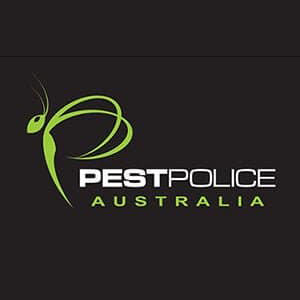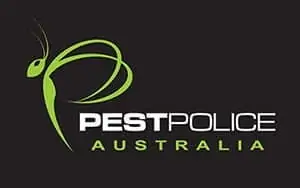Birds are a great and essential aspect of our lives. They can be entertaining, attractive, and integral to our ecosystem. Another crucial role that birds can play is environmental health indicators comparable to the canary in the coal mine. But if they decide to establish their nests close to commercial structures, they can cause problems, and you might need to implement pest and bird control.
Birds can be a concern for both individuals and commercial property owners. They can harm property through their nests and droppings, present a danger to onlookers during their nesting season, and in the worst scenario, they can infect people with diseases. For these reasons, it’s critical to understand that sometimes implementing a pest and bird control strategy may be vital for protecting you, your employees, and your family. Pest Police Australia is delighted to offer a solution to your bird control issue and is authorised to carry out a comprehensive range of pest and bird control measures.
This blog will share why pest bird control around commercial buildings is important.
Why Does Pest and Bird Control, Matter?
Thousands of dollars are spent annually to clean up the mess that urban nuisance birds leave behind. Building surfaces are a favourite landing, roosting, and nest-building spot for pest birds, including pigeons, crows, and gulls. As well as harbouring any of 60 infectious diseases, bird feces are acidic and will swiftly corrode construction materials.
Installing a bird control system is essential before the problem with birds spirals out of control to stop the spread of disease and protect your property.
Before developing a bird control strategy, it is crucial to know the types of birds that are a problem, what they are doing, and how many there are. Although there are several solutions for controlling birds on the market, those that physically deter birds from landing, roosting, and nesting are the most successful.
Reasons Why Pest and Bird Control Is Important
The longer birds can roost or nest in an undesirable location, the more difficult it will be to force them to go. When dealing with pest birds, it’s crucial to be proactive. You may end up saving time and money in the long term.
Here are a few of the major reasons why pest and bird control is important:
It Poses Health Risk
Sixty different diseases and ectoparasites that can be transmitted to people and animals are carried by birds, bird droppings, and nesting materials. Dried bird droppings near ventilation systems can spread across buildings, infecting occupants with weak immune systems.
Birds can transmit various diseases, the most infamous of which is probably avian influenza, sometimes known as bird flu. The following less well-known disease strains are also spread by birds:
- Histoplasmosis and Cryptococcosis
- Salmonella
- Psittacosis
It Can Pose Health Code Violations
Pest bird droppings may breach health rules and result in penalties, legal action, or closures if discovered in food processing businesses, restaurants, storage facilities, or other locations. Birds are regarded as pests and require the same level of care as, for example, roaches or rodents.
It Can Cause Property Damage
Bird droppings can cause the following damages to your property:
Inventory Damage
Bird droppings can contaminate production lines. They frequently nest in warehouses and storage facilities or perch on the rafters. Their droppings may breach health regulations in such areas.
Roof Damage
Due to the high acidity of bird droppings, if left to accumulate on rooftops for an extended period, the metal gutters and roof may corrode, leading to water leakage. For instance, this may be risky and expensive in a warehouse.
Additionally, some birds (like pigeons) have been known to make their nests in the gutters and other crevices on roofs, which can obstruct drainage systems and cause water damage.
Equipment Damage
Bird droppings may make machinery or equipment unusable or call for routine cleaning to protect operators. Droppings can destroy construction materials and stain fabrics since they are quite acidic. Once destroyed, these will need to be restored or completely replaced.
Product And Packaging Damage
Numerous issues might arise from birds flying into loading docks, factories, and warehouses. Birds frequently ruin food ready to be loaded, such as bread. In addition to the physical damage, birds fly into a warehouse and build nests high on the roof, dropping their waste on the merchandise and pallets below.
It can cause health issues for employees in addition to physical damage. In this case, bird nests may also pose a fire risk, especially if they are close to electrical systems. In fact, electrical sign businesses blame many of the fires that occur in their products on bird activity.
Unattractive Feature
Bird nests and droppings are an unsightly feature of houses and businesses. Visitors may think a business is reckless if they see birds on a ledge, a sign, or bird droppings filling the pavement.
Increases Your Cost of Cleanup
Businesses that regularly clean up after birds waste their money and endanger their workers’ health. Some businesses spend thousands of dollars annually on routine bird droppings removal. It can be time and money-saving for businesses to install pest and bird control solutions.
Safety Risk
Bird droppings on stairwells, doorways, and walkways can be dangerous since they could cause tripping. Pigeons and doves like to nest in quiet, infrequently utilised areas like fire escape landings, and it’s not unusual to find a buildup of droppings in these areas. Over time, feces accumulation can become odoriferous, and the resulting bad odour can draw pests and bacteria.
Types of Birds That Can Cause Problems
Although many bird species in Australia can cause problems in businesses and public places to varied degrees, the following is by far the most common bird species we encounter requiring management in our area:
Seagull
Seagulls are a common sight along waterways, beaches, rivers, etc. They have evolved to become largely scavengers who survive by harassing people for food leftovers and looking for trash at dumps.
In the vicinity of water or regions of vegetation, seagulls frequently build their nests on distant islands. Seagulls will raise a brood of 2 to 4 in a ground-based nest made primarily of local vegetation twice a year.
Dove
The common dove, which you can find in both urban and rural regions, is an imported species. Doves occasionally consume tiny bugs and worms in addition to various grains, seeds, small berries, and fruits.
Doves are everywhere, and enormous flocks frequently gather on rooftops, overhead wires, TV antennae, and the sides of roadways. They breed all year long and frequently build their nests among the branches of trees and bushes.
Pigeon
Australia is home to the common pigeon, sometimes known as the rock pigeon. However, the majority of pigeons found are feral birds that exist largely as scavengers. Some pigeon varieties are bred by fanciers for racing or show.
Like the majority of birds, they coexist peacefully with people, and in fact, our actions frequently draw them in. They are everywhere, including urban areas, industrial sites, and recreational parks.
Pigeons are prolific breeders who normally deposit their eggs all year long on protected or partially protected roof ledges.
How to Conduct Bird Pest Management?
There are several techniques used to manage a bird problem for commercial and industrial clients. These techniques can range from passive deterrents to more active (and occasionally more deadly) systems when an expanded or massive bird population poses a threat to public safety.
Licensed experts in bird management, Pest Police Australia can recommend and put into practice any of the following strategies:
Netting
You can install specially-made netting to keep birds out of your property. Large open loading bays, warehouses, and athletic venues, for instance, may offer numerous options for bird access, making netting specially made for that place to deter a certain bird.
The UV-stabilized substance used to make the netting makes it a good long-term option.
Spiking
This technique prevents birds from landing on ledges, roofs, etc. In essence, they are plastic bases supporting stainless steel spikes. Birds can’t settle on that area because of the variety of angles at which the spikes are positioned. Spiking is another effective long-term method of bird control.
These days, it is employed in locations like airports, CBD structures, and major sign installations that need a long-lasting, low-maintenance bird control solution.
Bird Proofing
Our first advice, for instance, is to ensure your facilities are adequately proofed when a bird presence is discovered within a factory or warehouse.
Blocking any such access points is essential in isolating the bird problem because birds will enter through any open locations, including those under eaves, doors, and windows.
Bird Post & Wire System
It works similarly to the bird spiking system in that it successfully keeps birds from landing at a certain area, such as the ledge of a building. The method uses posts made of stainless steel with spring-loaded wires between them.
A bird’s landing is very unpleasant due to the “springy” action of the wires. This form of bird control may be more aesthetically pleasing than the spiked system and works well for building ledges that may be low-level or call for a less visually intrusive method.
Electric Wire System
A technique for bird control that uses, for instance, a metal strip or tracks affixed to a building’s ledge. It functions similarly to the post and wire system and bird spikes, creating a highly unpleasant landing area for birds. Although this technique can be effective, it requires more maintenance than the other deterrents since a low-level electric current is passed through the wires.
Baiting
When a large group of birds congregates, as there may be in a vineyard or grain storage area, a more aggressive approach to bird control may be necessary. An efficient bird control technique uses an attractive avian bait mixed with a potent narcotic component that will knock a bird out so you can remove it.
Choose Pest Police Bird Control Services Today!
Melbourne residents may need bird removal or control for a number of reasons and circumstances. Deterrents might be required throughout the city and suburbs in a range of commercial and residential settings. Birds can add life to any environment, but let’s face it, they can also be a serious and frequently destructive issue.
Our dedicated and committed Pest Police team can efficiently and professionally provide a comprehensive variety of bird removal and control services throughout Melbourne. Our skilled team can employ a range of netting, ultrasonic deterrents, or preemptive spiking alternatives, regardless of the size and breadth of the issue.
Pest Police provides fantastic payment methods and prices that are genuinely competitive. All areas of Melbourne as well as the suburbs, can access our services. So call our welcoming and accommodating team immediately at 1800 737 876 if you need help with bird control.

